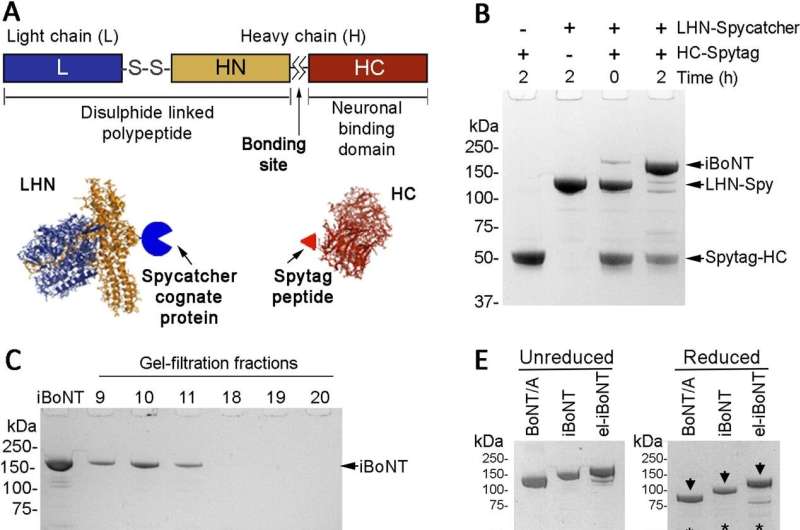This article has been reviewed according to Science X's editorial process and policies. Editors have highlighted the following attributes while ensuring the content's credibility:
fact-checked
trusted source
proofread
Modified Botox found to give long-term pain relief after nerve injury without side effects

A team of scientists from the Universities of Sheffield, Reading and University College London (UCL) and US-based biopharmaceutical company Neuresta have created a new, elongated botulinum neurotoxin which can alleviate chronic pain without risk of paralysis or addiction.
Chronic pain is extremely difficult to manage, and currently available drugs are limited by dangerous side effects. Opioids like morphine and fentanyl are the gold standard for short-term pain relief but they cannot effectively treat chronic pain due to the risk of addition, abuse and overdose.
Findings of the new study, published in the journal Life Science Alliance, show that a single injection of the precisely engineered botulinum neurotoxin provides long-lasting relief in mice models, without adverse effects.
The team, led by Professor Bazbek Davletov, Chair of Biomedical Science, and Research Associate Charlotte Leese from the University of Sheffield, developed a new way of rebuilding Botox by using elements of Clostridium botulinum and created a biopharmaceutical with new properties, without unwanted toxic effects.
By breaking down Botox into two separate parts, the team was able to produce them in an optimal elongated configuration, and then put them back together in a Lego-like manner.
Professor Davletov, from the University of Sheffield's School of Biosciences, said, "Currently, painkillers can only relieve chronic pain temporarily and often have unwanted side effects."
"A single injection of the new nonparalytic blocker at the site of pain could potentially relieve pain for many months in humans and this now needs to be tested."
"We hope that the engineered drug could improve the quality of life for the millions of people world-wide who suffer from chronic pain."
"The promising results led to transfer of the technology to a US-based biopharmaceutical startup company Neuresta. The Neuresta team is now working on neuronal blockers tailored for various neurological conditions using the new bonding technique."
Professor Davletov added, "This new program of biopharmaceutical development could make it possible to produce a variety of Botox-like medicines in a safer and more economical way."
While current Botox and similar Dysport injections can effectively paralyze muscles, the elongated botulinum biopharmaceutical blocked the pain-linked nerves without causing muscle paralysis.
Botox holds great promise for clinical applications, but its paralytic activity has been a stumbling block for pain relief until now.
The team demonstrated that their newly engineered neurotoxin is a non-paralyzing neuronal blocker in preclinical collaborative studies at the Universities of Sheffield, Reading and UCL.
The method could potentially allow a form of chronic pain relief which could last as long as a single Botox injection—around four to five months—potentially helping as much as 20 percent of the population who are thought to be living with chronic pain.
Dr. Maria Maiaru, from the University of Reading, said, "People with chronic pain need new options for managing their symptoms. They need safer and more effective drugs."
"These new Botulinum molecules are effective in reducing pain-like behavior in models of human pain. We believe that this approach could open the way for the development of pain treatment to improve the quality of life of millions of people living with chronic pain."
More information: Charlotte Leese et al, New botulinum neurotoxin constructs for treatment of chronic pain, Life Science Alliance (2023). DOI: 10.26508/lsa.202201631



















